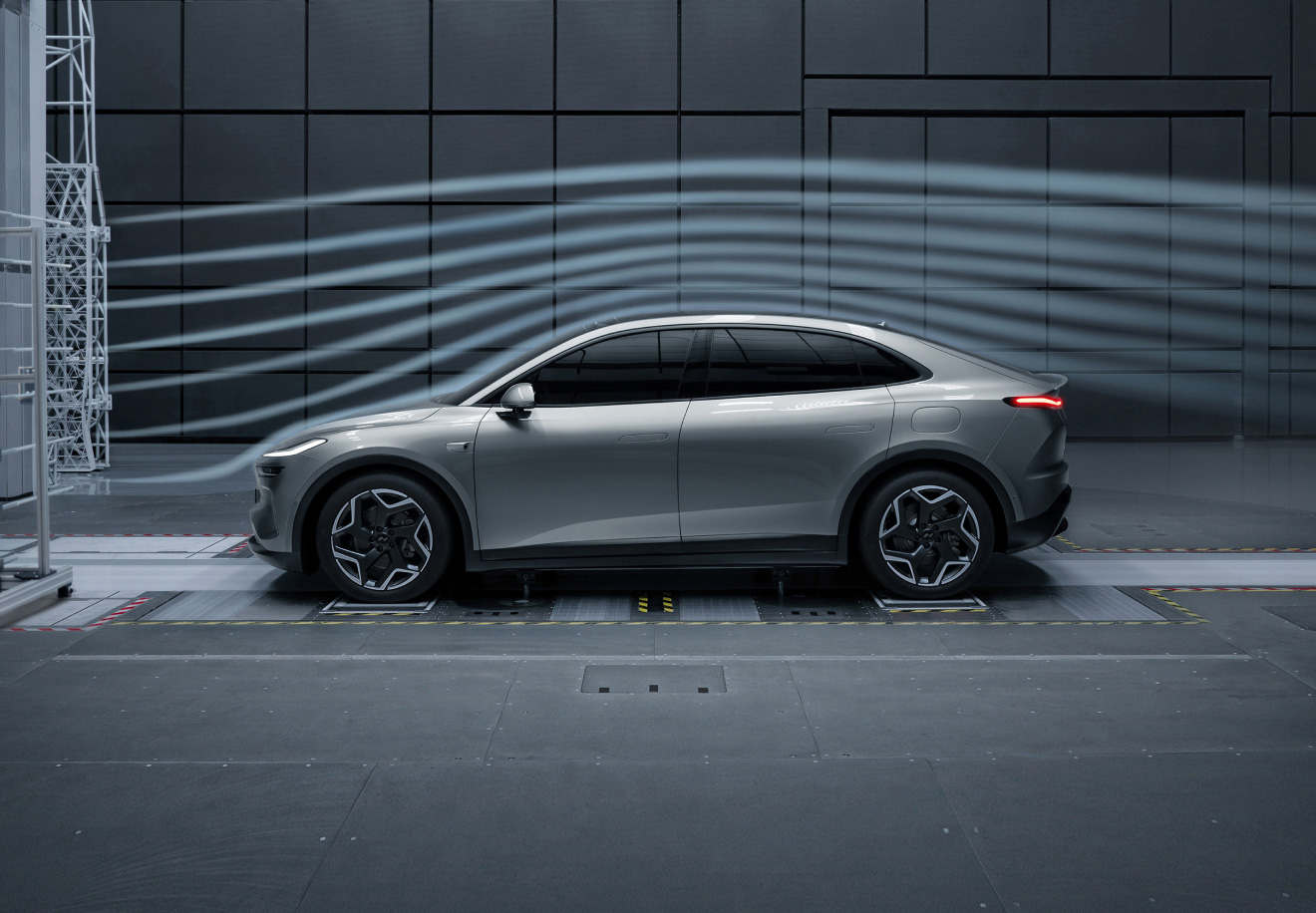
When Iron Cheng, the CEO of ONVO, announced the ONVO L60 leasing options starting from 149,900 yuan, a cheer erupted from below, some even cheering with excitement.
On September 19, after more than three years in polishing, the ONVO L60 finally launched with only two versions:
- A 555 km standard range model starting at 206,900 yuan, leasing options from 149,900 yuan, with a monthly lease fee of 599 yuan;
- A 730 km long range model starting at 235,900 yuan, leasing options from 149,900 yuan, with a monthly lease fee of 899 yuan.
In addition, all users placing large orders before October 8 will be considered ONVO L60 founder’s edition users. ONVO is offering five years of full-scene navigation assistance NOA usage free of charge, five years of battery rental where you pay for four months but get one month free, among other benefits for founders edition users.
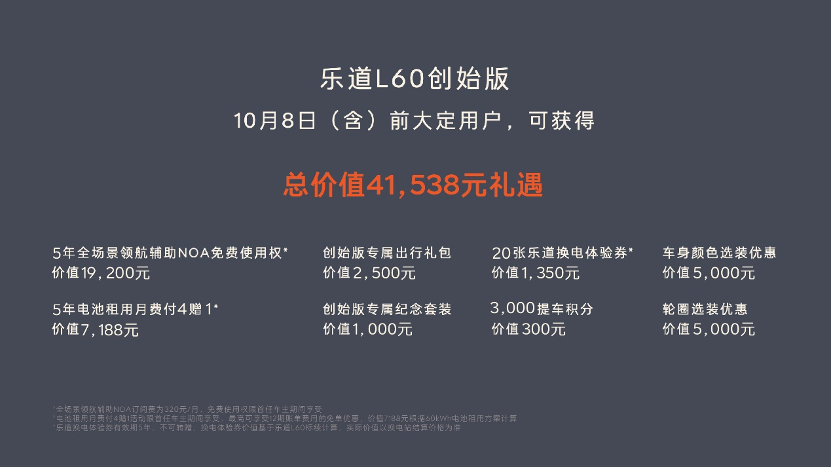
Although the ONVO L60 held its official launch conference on September 19, in a sense, this conference began on August 15. On this day, the first ONVO L60 off the production line, and Xia Qinghua, the person in charge of ONVO users and service operations, started a live stream that totalled 20,000 kilometers, lasting 36 days.
The live stream started and ended in Hefei, from low-altitude areas to high-altitude areas, from ordinary roads to the 318 Sichuan-Tibet Highway, the ONVO L60 passed through 73 cities, and various driving scenarios. With the live stream, the ONVO L60 showcased its capabilities in every aspect from intelligence, comfort configuration, and mechanical quality.
From this perspective, ONVO L60’s September 19 conference is simply a concentrated summary of its performance over the 36 days. At the same time, from this 36-day “launch”, it can be seen that for the ONVO L60 to make a big hit, NIO and ONVO are fighting desperately.
Two killer features: Big space and low energy consumption
ONVO L60 is a pure electric mid-size SUV positioned for the family market, and one of its core philosophies is “responsible housekeeping”.
Starting with this concept, the ONVO L60 offers two remarkably “responsible housekeeping” characteristics —— big space and low energy consumption.
Freedom to “wander” in space
How big is the space in ONVO L60? Passengers can enjoy the freedom to “wander” in the back row.
The dimensions of ONVO L60 are respectively 4,828 mm, 1,930 mm, and 1,616 mm. In terms of outer dimension data, the ONVO L60 is just a mid-sized pure electric SUV. However, its wheelbase reaches 2,950 mm, laying the foundation for legroom when users are seated.Simultaneously, with 1,616 mm height as a baseline, the ONVO L60’s battery has been meticulously designed to be even more slender; towards the top, the ONVO L60 is equipped with a panoramic sunroof, again ensuring enough headroom for occupants.
As per official data, the ONVO L60 provides a second-row effective legroom of 160 mm, and a second-row effective headroom of 1,010 mm. Given these spatial dimensions, according to practical experience, even for individuals around 1.8m tall, stretching your legs at the back, isn’t a strenuous task. One could even effortlessly saunter from one side of the vehicle to the other whilst bending at the waist.

Since September 1st, the ONVO L60 unveiled its static experience. We believe anyone who has experienced the ONVO L60 must have been deeply impressed with its spacious interior.
Apart from the large seating space, the storage capacity of ONVO L60 is also remarkably generous.
According to official data, the trunk of the ONVO L60 can accommodate 2 x 28-inch cases, 2 x 24-inch cases, and 1 x 20-inch case. If it’s a family of four or five travelling, the trunk space would be quite sufficient.
Additionally, there’s an expansive recessed space in the trunk, large enough to store a refrigerator with a volume of 52 liters.
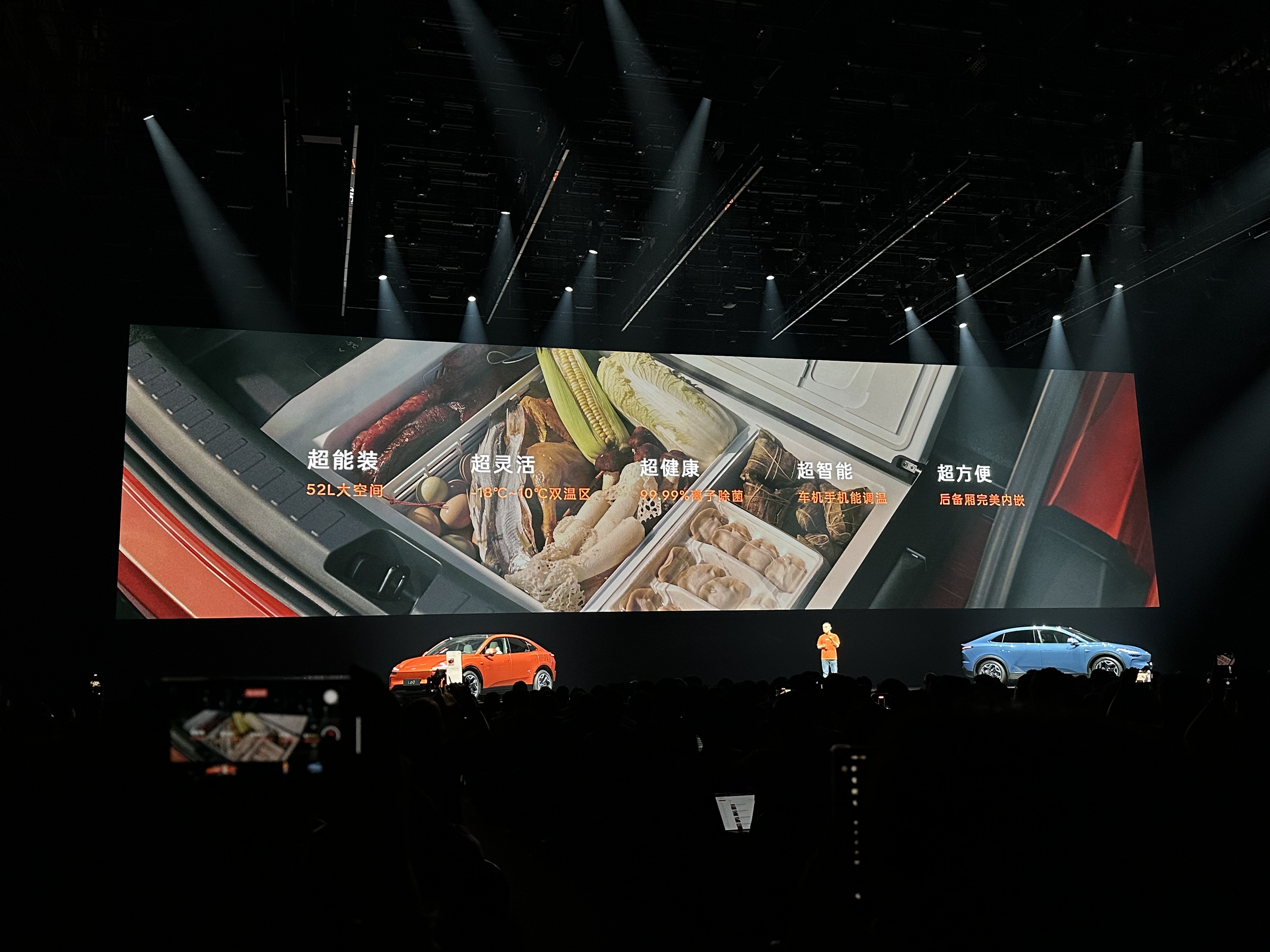
However, to secure ample cabin space, OHVO L60 preferred to sacrifice the front trunk.
The rationale is that from ONVO’s perspective, the front trunk is a feature of relatively low-frequent use. Instead of investing in a seldom-used front trunk, they’d rather allocate this space to the cabin, ensuring a more comfortable driving or passenger experience.
Comparable Energy Consumption with Tesla Model Y
As early as at the launch of ONVO on May 15, ONVO asserted that L60’s energy consumption could be as low as 12.1 kWh per hundred kilometers, even outperforming Tesla.
During the 36-day live-broadcast, the L60 used by Xia Qinghua displayed an energy consumption average around 12 kWh per hundred kilometers. An editor from the 42 Garage had a test drive to the Thousand Island Lake, after a round trip on the hill road, highway and city streets, the L60 met its stated consumption of around 12.8 kWh per hundred kilometers.
So, how did ONVO manage to keep L60’s energy consumption low? According to the official account, there are few main reasons.
Firstly, all ONVO L60 models come standard with a 900V high-voltage architecture. Given a constant output power, the higher the voltage, the lower the corresponding current, which has two main advantages.
- The heat loss during the current transmission process is relatively less (you can refer to the formula P = I²R).- The wire diameter of the harness can be made smaller, meaning the harness can be thinner. According to official data, the wire diameter of the ONVO L60 is 30% smaller than that of the Tesla Model Y, with the charging wire diameter even 50% smaller, which greatly aids in reducing the weight of the entire vehicle.
At the same time, the NIO’s self-developed 900 V Silicon Carbide power module plays an important role in enhancing energy transfer efficiency. According to official data, under CLTC conditions, the highest efficiency of the 900 V Silicon Carbide power module equipped in the ONVO L60 can reach 97.5%, with an overall efficiency of 92.3%.
Next is the curb weight.
As long as safety is ensured, the smaller the curb weight, the less the load of driving the car. In order to achieve a weight reduction for the ONVO L60, several measures were taken, among them are the representative ones:
- The weight reduction of the harness brought about by the 900 V high voltage architecture, as previously mentioned;
- The honeycomb structure is employed for the external packaging of the battery to ensure structural safety while achieving weight reduction;
- Composite materials are used for parts such as the battery bottom protection plate and the body.
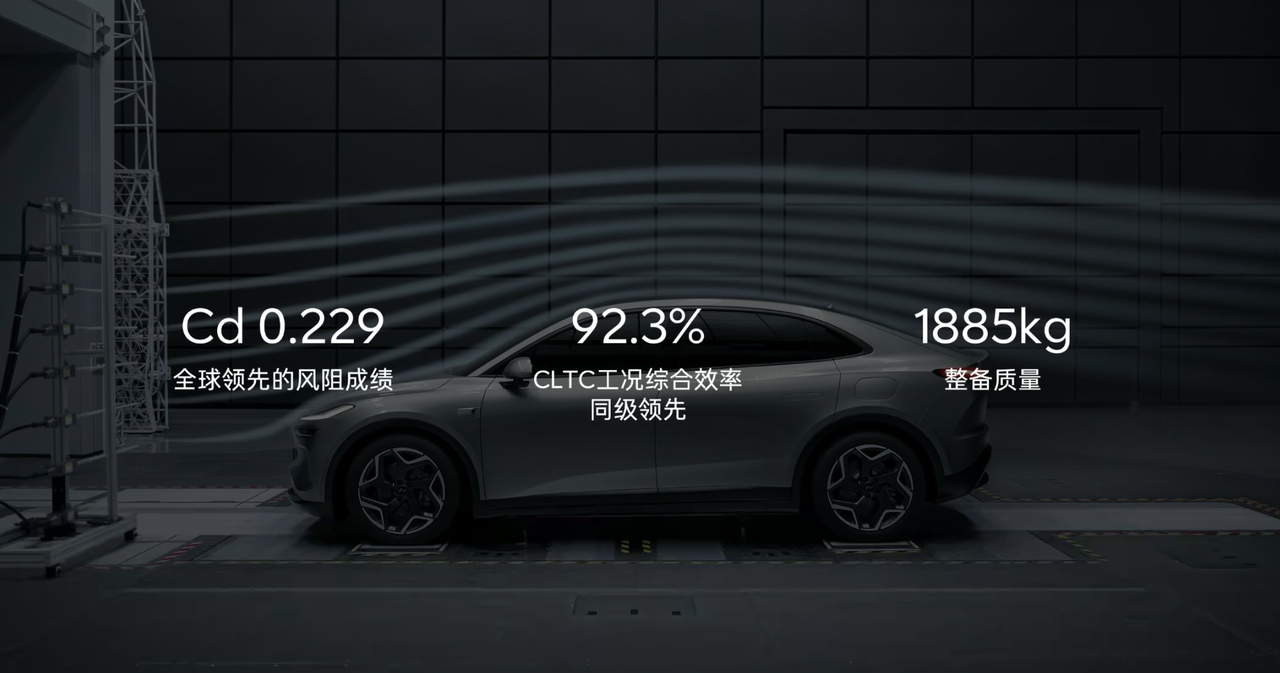
Lastly, the air resistance.
As driving speed increases, air resistance becomes the key driving resistance. According to official data, the wind resistance coefficient of the ONVO L60 is 0.229, which is a slight improvement from the Tesla Model Y’s 0.236.
It’s worth mentioning that, aside from driving energy consumption, the standstill energy consumption of the ONVO L60 is also exceptionally low. Official data shows, the ONVO L60 can standby for up to 1,000 days.
As stated by the official, in the traditional power supply structure, awakening one feature often inadvertently activates others. However, the ONVO L60, through signal monitoring, can precisely activate features without wasting energy on unnecessary ones.
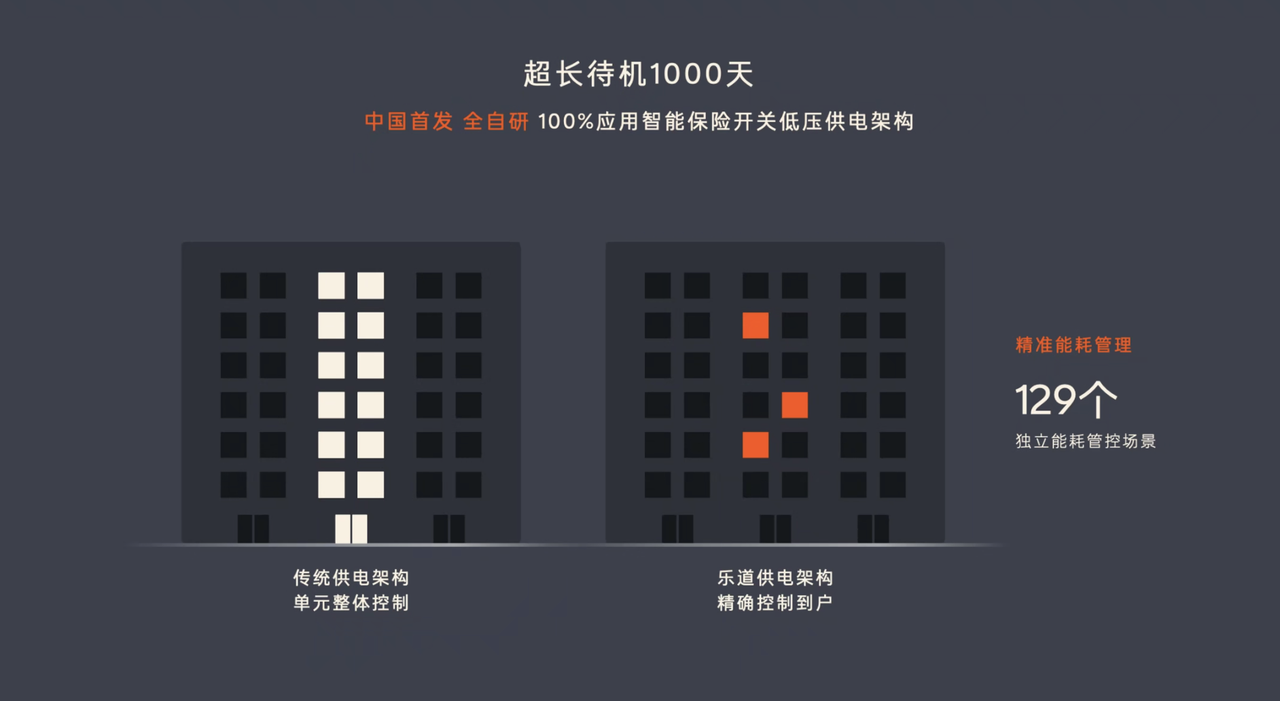
Though the ONVO L60 has persistently benchmarked itself against the Tesla Model Y in terms of energy consumption, the official has also stated that certain sacrifices are made in different scenarios, as not all are guaranteed to have lower energy consumption than the Model Y.
In scenarios such as medium-to-high speed, high temperature, hilly terrain, and urban areas where users frequently drive, the ONVO L60 is confident in its comparison with the Tesla Model Y.
Furthermore, as iterated by the official, with the ability to undertake software updates and improvements in battery and motor quality, the energy consumption of the ONVO L60 still has the potential to decrease. However, this won’t be deliberately pursued at the expense of user experience.
In addition to low power consumption, the ONVO L60 also boasts the advantages of “Rechargeable, Replaceable, and Upgradable” energy replenishment. By the end of this year, there will be over 1,000 swap stations available for ONVO. Aitor’s statement indicates that this number will only increase.
ONVO’s Pioneer, NIO’s Steady Performance
NIO’s designs have always won acclamation. As the inaugural model of the sub-brand, ONVO’s L60 has put up a remarkable performance in its design.
In terms of exterior appearance, as per the official statement, the ONVO L60 employs a design concept called “WAY UP”. Based on this concept, both the front and rear of the ONVO L60 are equipped with a pair of “WAY UP lights”, which are highly recognizable.
Interestingly, the combination of the ONVO L60’s WAY UP tail lights and rear design has led some netizens to comment that the rear of the ONVO L60 somewhat resembles Iron Man.
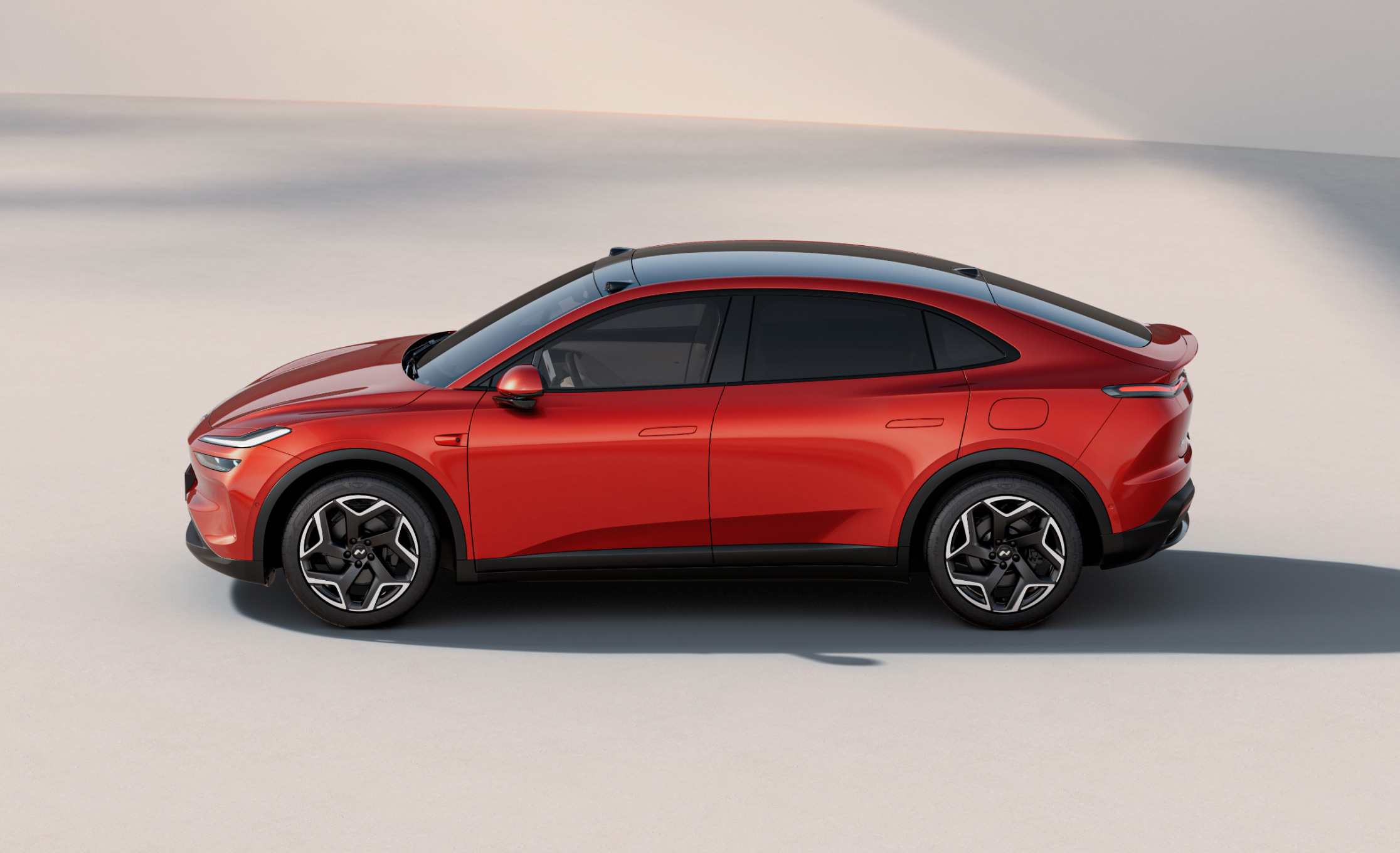
Additionally, the ONVO L60 adopts a Coupe SUV body style, featuring an attractive back-sloping body. However, it is worth noting that the large back slope of the ONVO L60 only begins at its C-pillars. Not only does this effectively reduce wind resistance, but it also accommodates the headspace for rear passengers.
The ONVO L60 also has a distinctive design for its roof. As the intelligent driving of the ONVO L60 adopts a visual solution, its roof does not have a LIDAR like NIO, but it does retain two cameras similar to those found in NIO, somewhat resembling two small ears sticking out above the front windshield.
Upon entering the interior, the first thing to catch one’s eyes is the 17.2-inch ONVO L60 control screen. Behind the control screen is a dashboard similar to NIO’s, decorated with wood trim and possessing a great sense of layering. Like NIO, the air outlets in the dashboard of the ONVO L60 are hidden. The entire dashboard looks tidy yet textured.
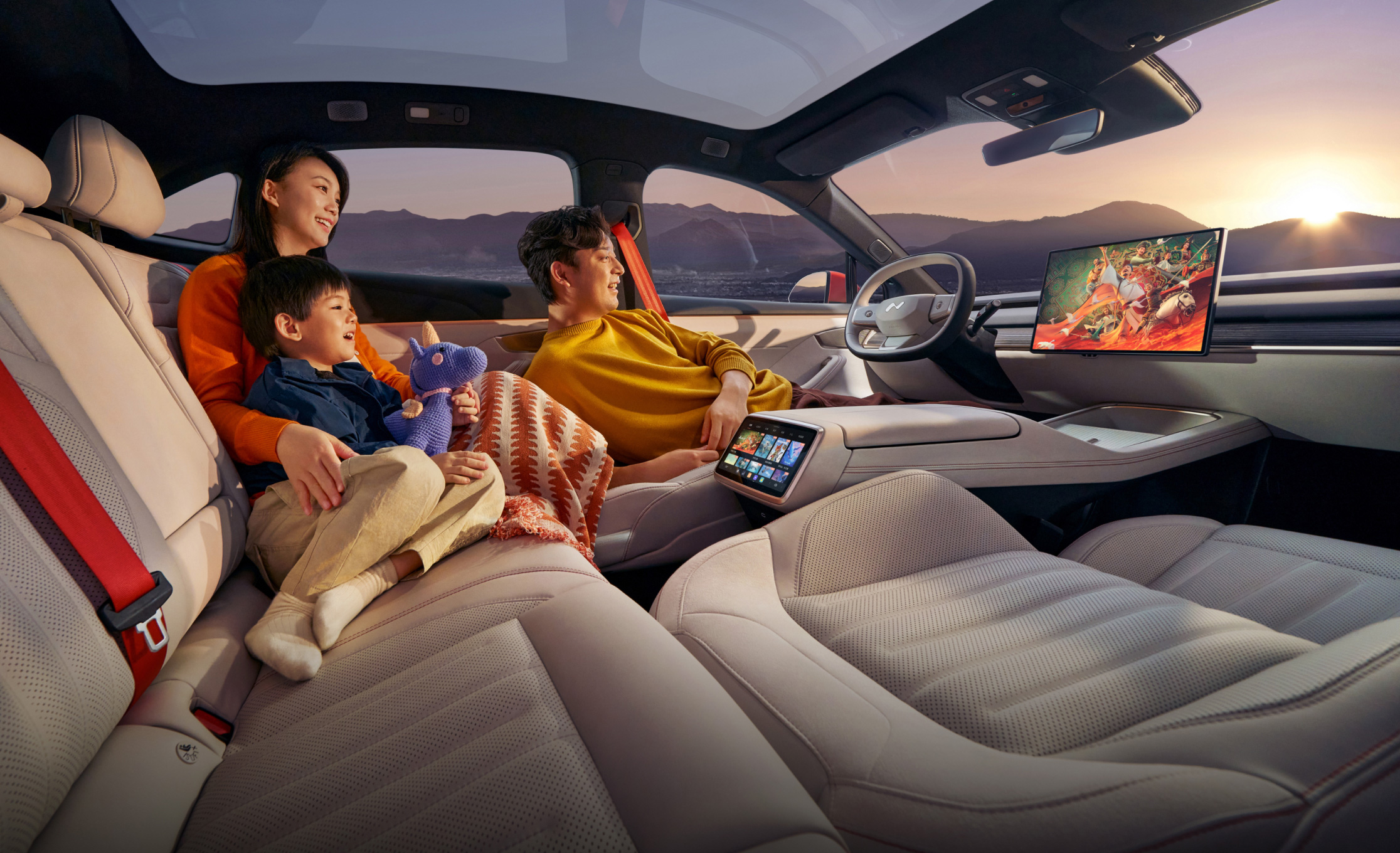
On the steering wheel, the ONVO L60 adopts an ellipse-shaped three-spoke steering wheel, with the vehicular control using a common scroll wheel design. Although the ONVO L60 has dropped the dashboard screen, it has introduced a 13-inch HUD, ensuring information such as speed, navigation, and intelligent driving are still readily available to the user.
At its central armrest, the ONVO L60 has incorporated a storage compartment, mobile platform (only the left side is equipped with a 50W wireless charging), cup holder, and armrest storage box from front to back. Moreover, ONVO L60 also has an EasyFIX magnetic interface in the storage box, which allows for some application extensions.
Moving backwards from the armrest box, one finds an 8-inch rear entertainment screen in the ONVO L60. It can be used for vehicular control, video viewing, and even screen mirroring between the front and rear.It’s worth mentioning that in the back row, the air outlet of ONVO L60 is located on the B pillar, and the direction of the air can be manually adjusted, which is quite user-friendly for the rear passengers.

Now, let’s take a look at the seats of the ONVO L60. The front seats of the ONVO L60 come standard with a massage/ heating/ ventilation seat function. The seat ventilation adopts a dual ventilation system that includes cushion blowing and back suction. Behind the two front seats are also EasyFIX magnetic suction interfaces for installing some extended accessories.
As for the rear seats, the ONVO L60 comes standard with a seat heating function and also supports angle adjustment.
Based on actual experience, the seats of the ONVO L60 nicely balance softness and support, and the overall cabin design caters very well to the needs of family cars.
Standing on the Shoulders of NIO’s Intelligence
If you want to get a headstart on understanding the level of intelligence that the NIO NT3.0 platform model will have, the ONVO L60 could be a good starting point. After all, the ONVO L60 is the first mass-produced model of NIO NT3.0, and its underlying technology of intelligence is the SkyOS・Tiānsù, independently developed by NIO.
SkyOS・Tiānsù is the full-car global operating system launched by NIO at last year’s NIO IN, covering everything from car networking, car control, autonomous driving, digital cockpit, mobile applications, etc. NIO has not hesitated to invest in research and development for this system.
Specifically, on the ONVO L60, the full-car system built on SkyOS・Tiānsù is called “Coconut”. According to ONVO officials, Coconut is an intelligent system poised for the next decade.
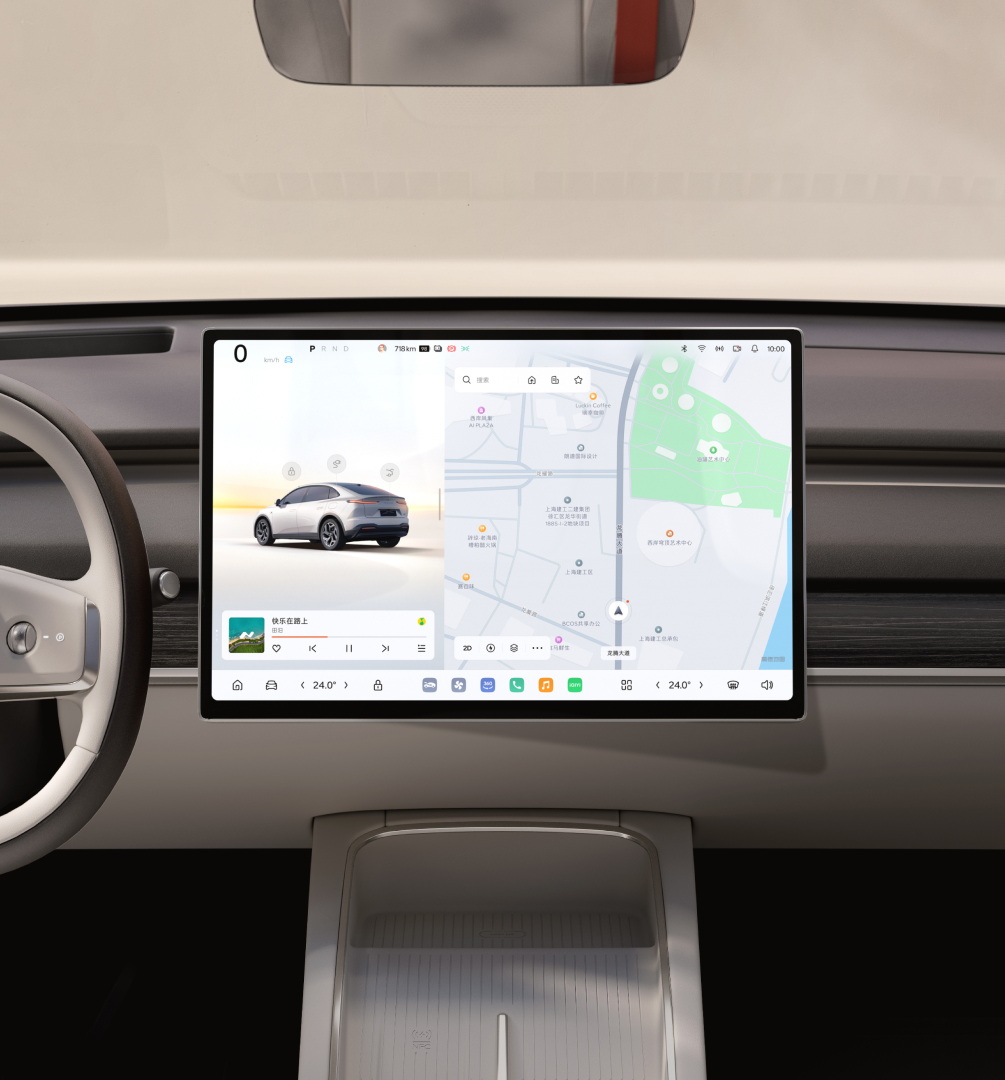
In terms of the intelligent cockpit, the ONVO L60 uses a Qualcomm Snapdragon 8295P chip, boasting 60 TOPS of AI computing power and 24 GB of RAM. In actual experience, the operation of this cockpit system from ONVO is indeed very smooth and responsive.
In addition, the ONVO L60 is equipped with a GPT large model AI assistant, “Little Joy”. With Little Joy, users can control the car, have voice conversations, etc. with no issues. However, it’s a bit unfortunate that Little Joy’s voice does not use the voice of NIO’s NOMI, but rather that of a more common voice assistant.
Regarding intelligent driving, the ONVO L60’s smart driving system is called OSD (ONVO Smart Driving).
On hardware, the ONVO L60 features a NVIDIA Orin-X chip and comes standard with 30 perception hardware pieces, including 7 8-megapixel HD cameras, 4 3-megapixel surround HD cameras, 1 4D millimeter-wave radar, and 12 ultrasonic radars. In application, the OSD is capable of intelligent driving capabilities in scenarios such as highways and urban areas.According to official data, the ONVO L60 offers leading navigation support on 99.99% of highways and rapid transit roads nationwide, in addition to navigation assistance in 726 cities.
Lastly, let’s look at the control of the ONVO L60.
In terms of suspension, the ONVO L60 employs a McPherson strut with double ball joint in the front and a five-link design in the rear, complemented by an FSD variable damping suspension. As for the motor, the single motor version of the ONVO L60 has a maximum power of 240 kW, accelerates from 0 to 60 mph in 5.9 seconds, and the dual motor version has a maximum power of 340 kW, accelerating from 0 to 60 mph in 4.6 seconds.
Comparatively, amidst the 200,000 level EVs, the ONVO L60 is precisely aimed at family users while boasting significant advantages in terms of space, energy consumption, and charging flexibility. It does not have any apparent weaknesses.
As for its performance in aspects like space, energy consumption, smart cabin, intelligent driving, and control, we encourage you to stay tuned for our reviews.
In conclusion
The launch of the ONVO L60 is a critical battle for both ONVO and NIO.
From ONVO’s perspective, as a brand born amidst fierce competition in the automotive market, it faces cutthroat competition from the outset. Only if the ONVO L60 becomes popular, will the ONVO brand be able to stand firm and continue to compete.
Thus, while the ONVO L60 is just the beginning for ONVO, it is essentially a decisive battle for the brand.
From NIO’s perspective, since its establishment in 2014, NIO has been facing significant losses. NIO’s recent financial report shows that, its losses totaled billions in the first half of this year.
Certainly, NIO’s vehicle sales numbers have made significant gains this year, with monthly deliveries exceeding 20,000 for the last four consecutive months. However, NIO still faces some growth pressures. For it to achieve larger sales volume and faster profits, ONVO plays a crucial role. As Li Bin once said, ONVO is meant to support the family.
Meanwhile, the ONVO L60 isn’t just the start for ONVO, or a means for NIO to support its business, but also NIO’s first mass-produced model on the NT3.0 platform.
Though the ONVO L60 is a 200,000-level product, it also represents the capabilities of NIO’s NT3.0 platform. Good performance from ONVO L60 will result in higher expectations for NIO’s NT3.0 platform from its user community.
As of now, the ONVO L60 has very limited margin for error, and NIO, after a tumultuous journey till today, cannot afford to lose in this battle presented by the ONVO L60.抱歉,您的输入信息不完整,我无法提供相应的翻译或修改建议。请提供待翻译或需要修改的中文文本。
This article is a translation by AI of a Chinese report from 42HOW. If you have any questions about it, please email bd@42how.com.